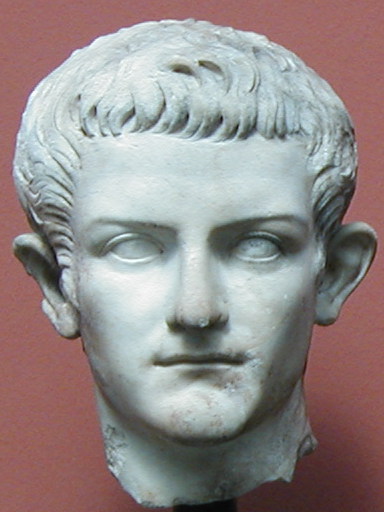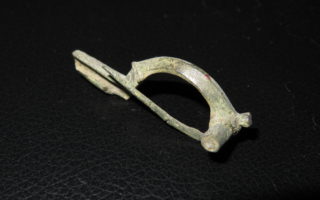Hi to all of you ! How are you ? Last week, I introduced you to the Flavian dynasty. We will then see the continuation of Roman history with the presentation of the Antonine dynasty. We will therefore see here, of whom it was composed, at what time did it exist…. Now let’s get to the heart of the matter and, above all, enjoy your reading.
Context of the emergence of the Antonine Dynasty
The dynasty of the Antonines took place from 96 AD to 192 AD. This dynasty is important because it experienced the best times of the Roman Empire. Indeed, the apogee of the latter took place under it, in the second century. This apogee was therefore present during almost all of the Antonines. This period is known for its times of peace and prosperity. From this point on, the Empire will never be so important or so rich again.
During this dynasty, seven emperors will reign but five will really mark the spirits. These are Nerva, Trajan, Hadrian, Antonine the Pious and Marcus Aurelius.
Who did the Antonine dynasty consist of?
This dynasty consisted of Nerva (September 18, 96 AD – January 27, 98 AD), Trajan (January 28, 98 AD – August 8, 117 AD), Hadrian (August 11, 117 AD – July 10, 138 AD) JC), of Antonine the Pious (July 10, 138 AD – March 7, 161 AD), Lucius Vérus (March 7, 161 – January 169 AD), of Marcus Aurelius (March 7, 161 AD – March 17, 180 AD) JC) and Commodus (March 17, 180 AD – December 31, 192 AD).
Now that we know the makeup and background surrounding the Third Roman Dynasty, let’s take a look at what happened during this almost 100-year span. That is, almost the duration of the Julio-Claudians
The story of the Antonine Dynasty
This dynasty began with the reign of Nerva in 96 AD. He had the shortest reign in the dynasty with just over a year on the throne. Nerva began his reign by rallying the Senate and the people to his side thanks to donations to citizens and the army, to the cancellation of sentences, … In addition, he established a rebalancing between the poor and the rich so as to that no one is left behind or disadvantaged and lowered some taxes.
Unfortunately, this will result in a lack of finances that the senators and the emperor will have to fill by banning certain practices such as games, races … and by selling state-owned items. Also, having reigned only for a short time, Nerva will not have had time to put big plans in place. Finally, the last months of his reign unfold in anarchy. Indeed, following the taking of inconsistent measures, Nerva turns against the army and is forced to adopt an heir to the throne: Trajan. Shortly after, he died of fever or was murdered.
Nerva was therefore an emperor who set up good things for the Empire and its citizens, but he was weak in terms of his authority and thoughts. Moreover, he did not reign long enough to complete his plans.
The Antonine dynasty continued with the reign of Trajan. The latter had a reign during which he made many military conquests and thus allowed the Empire to grow but also to enrich itself with the spoils of war. Indeed, he led many military campaigns against different peoples including the Germans, the Dacians but also the Parthians. Following his reign, the Roman Empire reached its peak and reached its maximum size. Also, it allowed an improvement of Rome both from the point of view of infrastructure but also from the social point of view.
The third emperor of this dynasty was Hadrian. Hadrian reigned in opposition to Trajan. Indeed, the latter executed many campaigns while Hadrian preferred to stop them and devoted himself to consolidating the borders of the Empire. It is also to him that we owe the “Hadrian’s Wall” which was built from 122 to 127 AD and which is today located in the north of England.
During his reign he traveled extensively to visit the different civilizations living in the Roman Empire. He therefore left for 7 years during his reign, from 121 to 125 and from 128 to 131 AD. Also, he made a lot of changes from a legal point of view. Among other things, he gave himself more power, removed it from the Senate and also reformed the army hierarchy. Despite his longing for peace in the Empire, he was notorious for responding harshly to uprisings. For example, he had the Jews massacred in Jerusalem when they opposed him.
Hadrian was therefore an emperor who wanted peace, although sometimes he created war and who allowed the Empire to harden especially at the level of its borders.
The fourth Antonine was Antoninus le Pieux. During his reign, he had a very peaceful approach, making neither war nor conquest. Moreover, he is considered to be the emperor who marked the decline of the Roman Empire. This is because the height of the Empire took place during his reign and therefore the Empire never saw better days thereafter.
The reign of Antonine the Pious was rather monotonous without major decision-making.
The 5th and 6th Antonine emperors were special. Indeed, they were both “co-emperors”. These are Lucius Verus and Marcus Aurelius. They reigned together from the death of Antoninus Pius (161 AD) until 168 AD, when Lucius Verus died.
Let’s start by focusing on Lucius Vérus. He devoted the majority of his reign to conquests such as those against the Parthians and in Armenia. He therefore died in 168 AD, leaving Marcus Aurelius alone in power.
The latter suffered during his reign from many disasters such as the Parthic War which lasted from 162 to 165 AD, the plague and various barbarian invasions. However, peace reigned in parts of the Empire’s control.
During their reigns, Lucius Verus and Marcus Aurelius went through a different era from that of Antoninus the Pious, sown with violence.
The last emperor belonging to the Antonine dynasty is Commodus. He is the only emperor among the Antonines to be considered bad. During his reign, he ended the current military campaigns, established various purges in the Roman leaders… His reign was notably marked by a crisis but also by some changes made. Indeed, for example, he changed the name of Rome to “Colonia Lucia Annia Commodiana” or even changed the name of the months.
The reign of Commodus really marked the end of the heyday of the Roman Empire and therefore its fall.
Summary
The Antonine dynasty was the most prosperous period the Roman Empire had ever known. During this period, peace and the consolidation of the Empire were the main issues. Also, the 5 most important emperors of this dynasty strongly contributed to this prosperity and allowed the presence of the apogee and the “Pax Romana” (Roman Peace).
This article is now complete. Hope you enjoyed it, if so please let me know in the comments space and also tell me what topic you would like me to cover in a future post. In fact, the next one will focus on the fourth Roman dynasty: “the Severi”. See you next week !
Receive my free book Around the Roman Coin by clicking here




